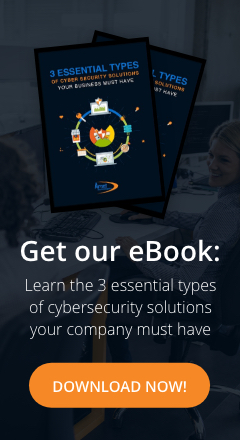Sometimes, all it takes to cause catastrophic disruption to your business is an accidental data breach or a natural disaster that ruins your IT equipment. Reliance on technology has made businesses even more susceptible, especially as the cybersecurity landscape continues to become more dangerous.
Every business, from Columbus to Cleveland, needs a continuity plan that prepares them for the worst-case scenario. Here are some tips for creating your plan.
Assemble your team
A business continuity plan will be ineffective if you don’t clearly define the roles and responsibilities of every person on your team. The ability of everyone to follow your plan is a key success factor in its implementation, so you need to carefully choose which employees will be initiating the plan and ensuring its procedures are followed to a T. Every employee should have a part to play and must understand their roles as well as the chain of command.
Make a network inventory
Protecting your systems and data requires a thorough understanding of your network and the devices that connect to it, including those owned by your employees. With a detailed inventory of both the on-site solutions and cloud resources you rely on, you’ll be able to identify weak points, prioritize the most important recovery tasks, and manage security more effectively.
Identify potential threats
Every type of disaster comes with different consequences, which is why you need to create a list of possible real-world scenarios. You should cover threats that face every business, such as data breaches and malware, as well as natural disasters and cyberthreats that are specific to your area or industry. Consult your network inventory to ensure you don’t overlook vulnerabilities associated with seemingly innocuous devices or apps.
Create a preparedness checklist
After drawing up your business continuity plan, test it out to ensure your team knows what to do and that everything from your network inventory is accounted for. Create a business continuity checklist to summarize each step and measure how well everyone performed. This checklist should help you identify areas of your plan that need improvement or additional documentation.
Set your recovery objectives
Your recovery objectives must be defined by two all-important parameters: a recovery point objective (RPO) and a recovery time objective (RTO). The former refers to how recent your backups must be, or how many hours’/days’ worth of data you can afford to lose. RTO refers to the maximum amount of downtime you can afford to weather after a disaster. Ideally, different IT solutions should have different RPO and RTO values.
List emergency contacts
Although assembling your internal team is critical for any smooth recovery operation, there will be times when you need to call up some emergency contacts. Examples include your managed IT services provider, building management team, insurance companies, legal services providers, and bank fraud report lines. These contacts must be readily available to avoid serious recovery delays.
Get some external help
No business leader likes to think about what might happen to their business in the event of a natural disaster, data breach, or other catastrophe. But as Honest Abe once said, “failing to plan is planning to fail.” It’s better to work closely with an IT support partner who provides disaster recovery as a service to ensure that your organization is ready for any eventuality.
Revise, test, and update
Businesses change all the time, and continuity plans need to change with them. Any plan is only as good as it is current, so you need to be in the habit of regularly testing and revising it as necessary. A general rule is to audit your plan at least once per year or whenever you’ve made a significant change to your operations or technology infrastructure. After all, with new systems come new threats and opportunities alike.
Arnet Technologies offers backup and disaster-recovery to businesses in Columbus, OH. We protect your data, review your business insurance, and help you create a disaster recovery plan that works for you. Call us today to learn more.

